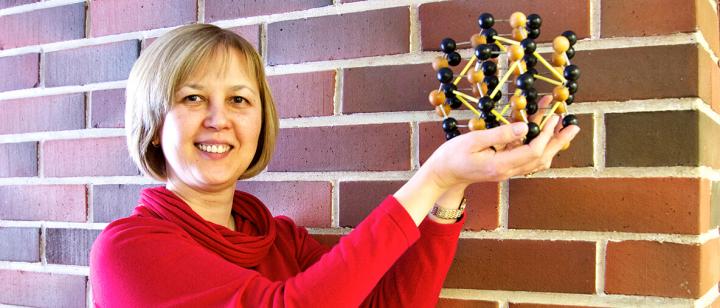
Credit: Anu Vallinkoski
A recent study revealed that by decorating iron nanocubes with gold the functionality of nanoparticles can be increased.
One of the major challenges in nanotechnology is the precise control of shape, size and elemental composition of every single nanoparticle. Physical methods are able to produce homogeneous nanoparticles free of surface contamination. However, they offer limited opportunity to control the shape and specific composition of the nanoobjects when they are being built up.
A recent collaboration between the University of Helsinki and the Okinawa Institute of Science and Technology (OIST) Graduate University revealed that hybrid Au/Fe nanoparticles can grow in an unprecedentedly complex structure with a single-step fabrication method. Using a computational modelling framework, the groups of Professor Flyura Djurabekova at the University of Helsinki and Prof. Sowwan at OIST succeeded in deciphering the growth mechanism by a detailed multistage model.
Elegantly combined considerations of kinetic and thermodynamic effects explained the formation of embedded gold layers and the site-specific surface gold decoration. These results open up a possibility for engineering a multitude of hybrid nanoparticles for a wide range of emerging applications. Their research was recently published in the highly ranked open access journal Advanced Science.
“When nature surprises us with an unexpectedly beautiful pattern, we must recognize it and explain. This is the way to cooperate with nature that is always ready to teach and expecting us to learn,” says Dr. Junlei Zhao, a postdoctoral researcher in the group of Prof. Djurabekova.
Nowadays, scientists are able to study nano-scale phenomena with great accuracy by using high-performance computational software and modern supercomputing infrastructures. These are of great support, not only for advancing fundamental science but also for finding promising solutions for many challenges of humanity.
###
Site-Specific Wetting of Iron Nanocubes by Gold Atoms in Gas-Phase Synthesis. Jerome Vernieres, Stephan Steinhauer, Junlei Zhao, Panagiotis Grammatikopoulos, Riccardo Ferrando, Kai Nordlund, Flyura Djurabekova, Mukhles Sowwan. Advanced Science, 02 May 2019
More information
University Researcher, Dr Flyura Djurabekova, Research group Materials for Accelerator Technology, University of Helsinki, [email protected], +358 504480924
Twitter: @FlyuraD
Media Contact
Riitta-Leena Inki
[email protected]
Original Source
https:/
Related Journal Article
http://dx.




